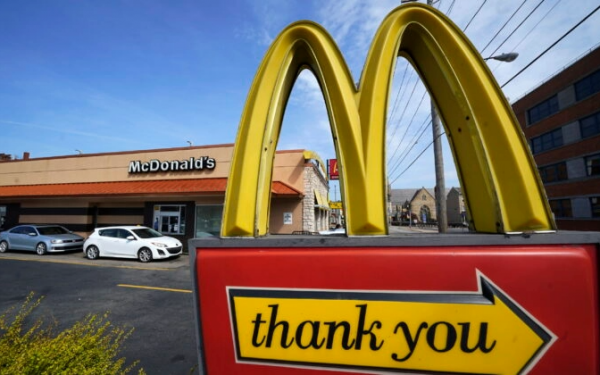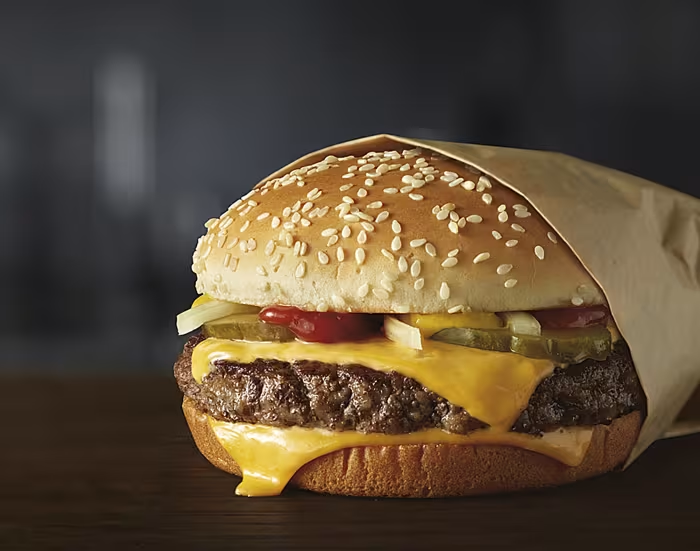McDonald’s iconic Quarter Pounder hamburger, a favorite among fast-food lovers, is at the center of a serious E. coli outbreak, according to the Centers for Disease Control and Prevention (CDC). Nearly 50 people across 10 states have been affected, with one reported death. This alarming news has raised concerns among consumers and health officials alike, prompting swift actions from both McDonald’s and federal agencies.
E. Coli Outbreak Linked to McDonald’s Quarter Pounders

The CDC announced that McDonald’s Quarter Pounders are believed to be connected to a recent E. coli outbreak that has impacted 49 individuals in 10 states. The fast-food chain is cooperating with health officials to identify the exact source of contamination. E. coli is a potentially deadly bacteria that can cause severe foodborne illness, and its link to one of the world’s most popular burgers has sparked widespread concern.
Extent of the Outbreak
The outbreak has primarily affected residents in Colorado and Nebraska, with 26 cases reported in Colorado alone, resulting in one fatality. Nebraska follows with nine cases. Additional cases have been confirmed in Utah, Wyoming, Iowa, Kansas, Missouri, Oregon, and Wisconsin.
Here’s a brief breakdown of the reported cases:
- Colorado: 26 cases (1 death)
- Nebraska: 9 cases
- Utah & Wyoming: 4 cases each
- Other states: Remaining cases spread across Iowa, Kansas, Missouri, Oregon, and Wisconsin
At least 10 individuals have been hospitalized, with one developing hemolytic uremic syndrome (HUS), a life-threatening condition that can lead to kidney failure. The CDC emphasized that the fatality and the case of HUS involved different individuals.
Investigating the Source of Contamination
Initial findings suggest that the source of the contamination could be linked to slivered onions used in the Quarter Pounder, sourced from a single supplier. Cesar Piña, McDonald’s North America Chief Supply Chain Officer, confirmed that the company is actively working with federal and state health officials to investigate further.
“We are taking proactive measures by removing Quarter Pounders from impacted areas and halting the use of fresh slivered onions until we have clearer results,” Piña stated.
McDonald’s Response to the Outbreak
In response to the outbreak, McDonald’s has taken several critical measures to ensure customer safety:
- Quarter Pounders Temporarily Removed: McDonald’s is removing Quarter Pounders from restaurants across several states, including Colorado, Kansas, Utah, Wyoming, Idaho, Iowa, Missouri, Montana, Nebraska, Nevada, New Mexico, and Oklahoma.
- Use of Fresh Slivered Onions Halted: Fresh slivered onions, a potential source of contamination, are being discontinued in impacted regions.
- Quarter Pound Beef Patties Pulled: The company has stopped using quarter-pound beef patties in the affected areas, limiting potential risks until more is known about the contamination.
The CDC noted that quarter-pound beef patties and fresh slivered onions are primarily used in Quarter Pounder burgers and not in other menu items. This targeted removal aims to limit the risk while maintaining the availability of other McDonald’s products.
What Are the Symptoms of E. Coli Infection?

E. coli, specifically the toxin-producing strain linked to this outbreak, can cause a range of symptoms, from mild to severe. It’s crucial to recognize the signs early, as E. coli infections can escalate rapidly, especially in vulnerable populations like the elderly, children, and those with weakened immune systems.
Here are some common symptoms of E. coli infection:
- Severe Stomach Cramps: Persistent and painful abdominal cramps are often one of the first signs.
- Diarrhea: Ranges from mild to severe, often bloody in more serious cases.
- Vomiting: Can lead to dehydration if not managed promptly.
When to Seek Medical Attention
If you’ve recently consumed a McDonald’s Quarter Pounder and are experiencing severe symptoms, it’s important to contact a healthcare provider immediately. According to the CDC, you should seek medical attention if you experience:

- Diarrhea lasting more than three days
- Bloody diarrhea
- High fever above 102°F
- Persistent vomiting
- Signs of dehydration, including reduced urination, dry mouth and throat, or feeling dizzy when standing
Early medical intervention can help manage symptoms and prevent complications like hemolytic uremic syndrome.
Impact on McDonald’s and Fast Food Safety
News of the outbreak has not only raised safety concerns but also affected McDonald’s financially. The company’s stock took a significant hit, falling by 7% in after-hours trading following the CDC’s announcement. This isn’t the first time McDonald’s has faced a food safety crisis; in 2018, over 500 people fell ill after consuming salads contaminated with an intestinal parasite.
The recent outbreak highlights the broader issue of food safety within the fast-food industry. While McDonald’s has implemented measures to address the current situation, experts emphasize the need for improved supply chain monitoring and stringent food safety protocols to prevent such incidents in the future.
How to Protect Yourself from Foodborne Illness

Foodborne illnesses like E. coli can be prevented by following some basic food safety measures. Here are some tips to keep in mind:
- Cook Ground Beef Thoroughly: E. coli can survive in undercooked meat. Always ensure ground beef reaches an internal temperature of at least 160°F.
- Wash Produce Carefully: While McDonald’s handles food preparation, washing produce at home reduces the risk of contamination.
- Stay Informed: Keep up with food safety alerts from the CDC, especially if you consume fast food regularly.
Conclusion: A Wake-Up Call for Fast Food Safety
The E. coli outbreak linked to McDonald’s Quarter Pounders serves as a reminder of the importance of food safety, both at home and in the fast-food industry. While McDonald’s has taken steps to address the contamination, the incident raises broader concerns about food sourcing, handling, and preparation across the industry.
As investigations continue, consumers should remain cautious and informed. If you’ve recently eaten a Quarter Pounder and are experiencing symptoms, don’t hesitate to reach out to a healthcare provider.
This outbreak also emphasizes the need for transparency and rigorous food safety measures to protect public health. Let’s hope this incident sparks positive change in how fast food chains ensure the safety of their products.


